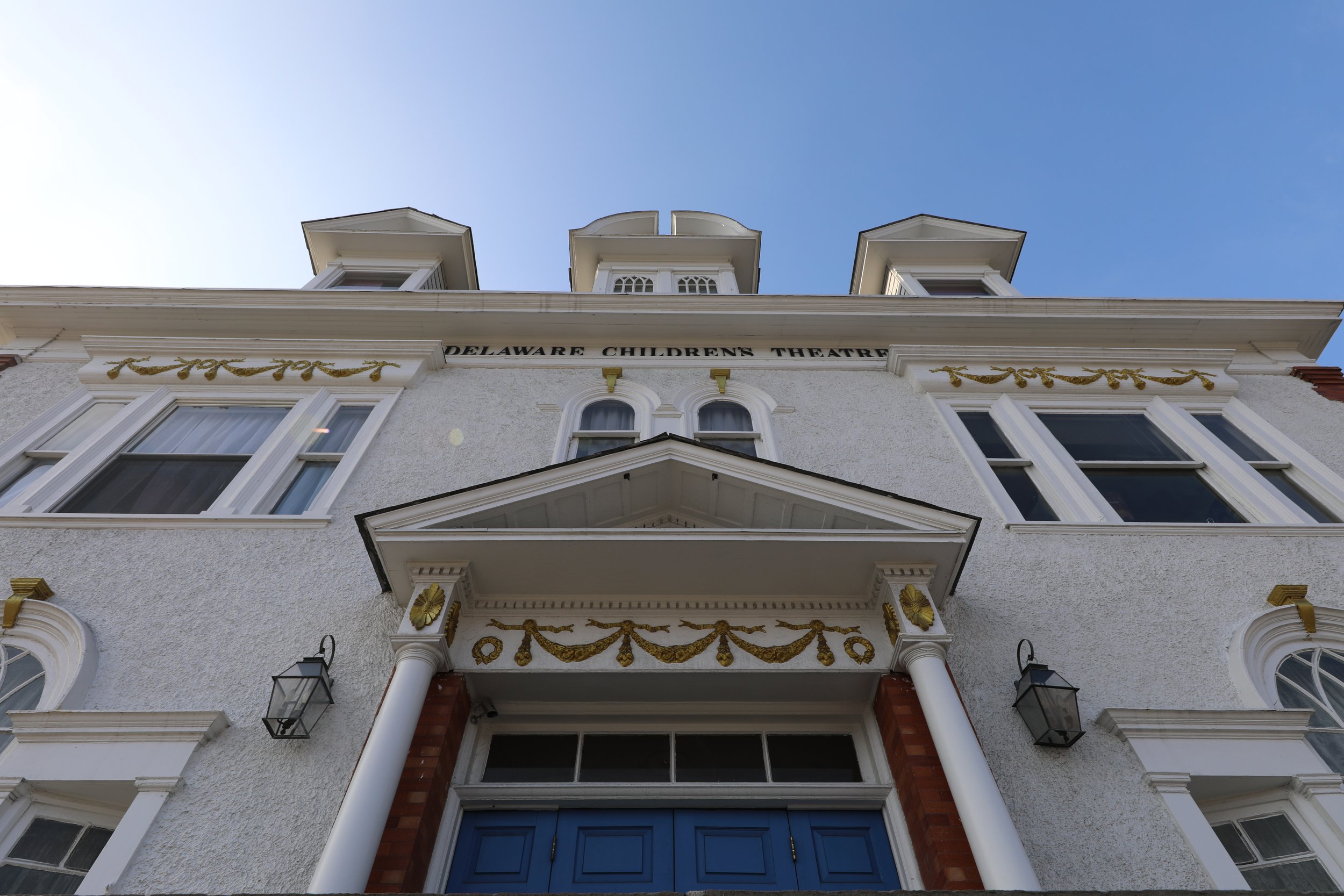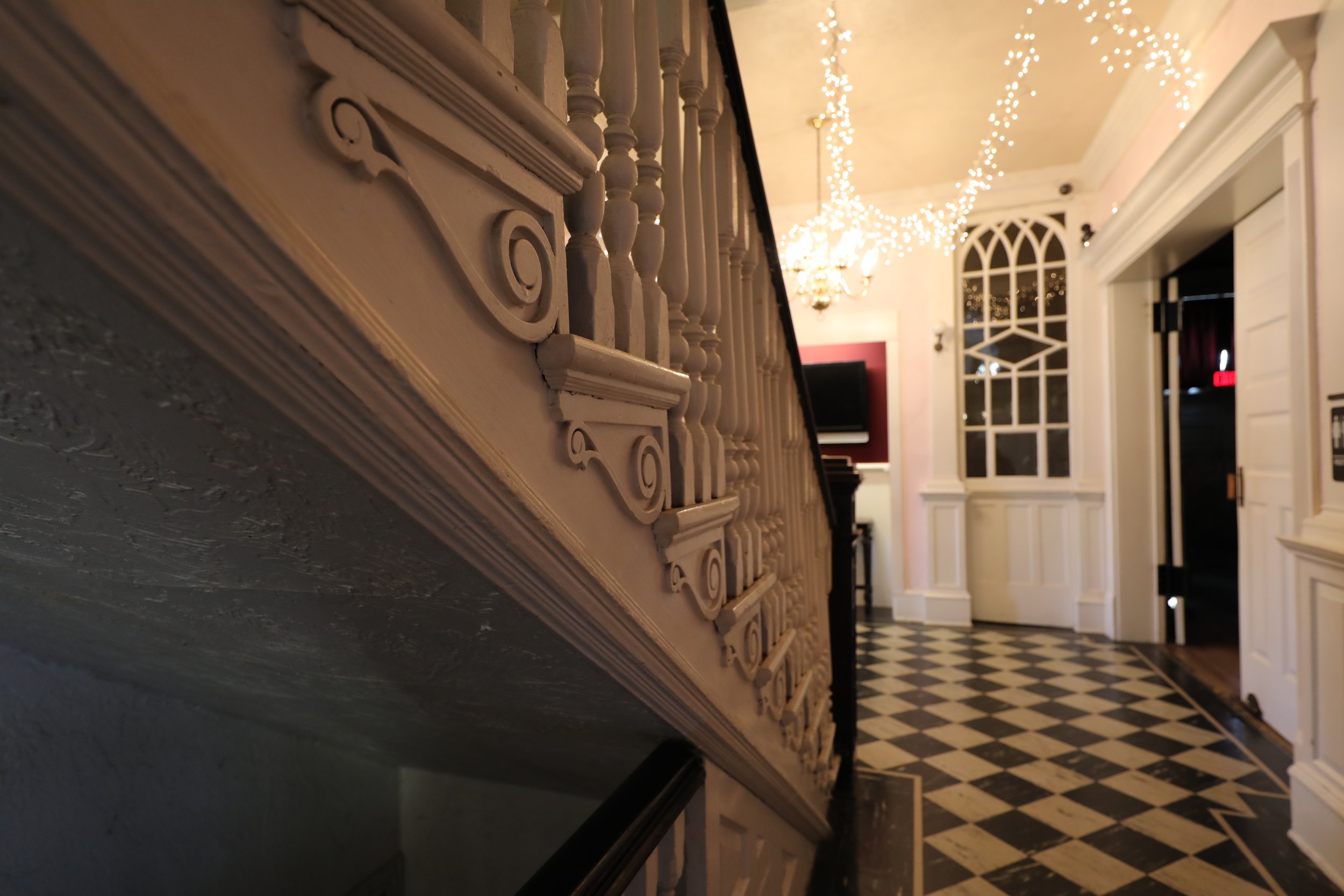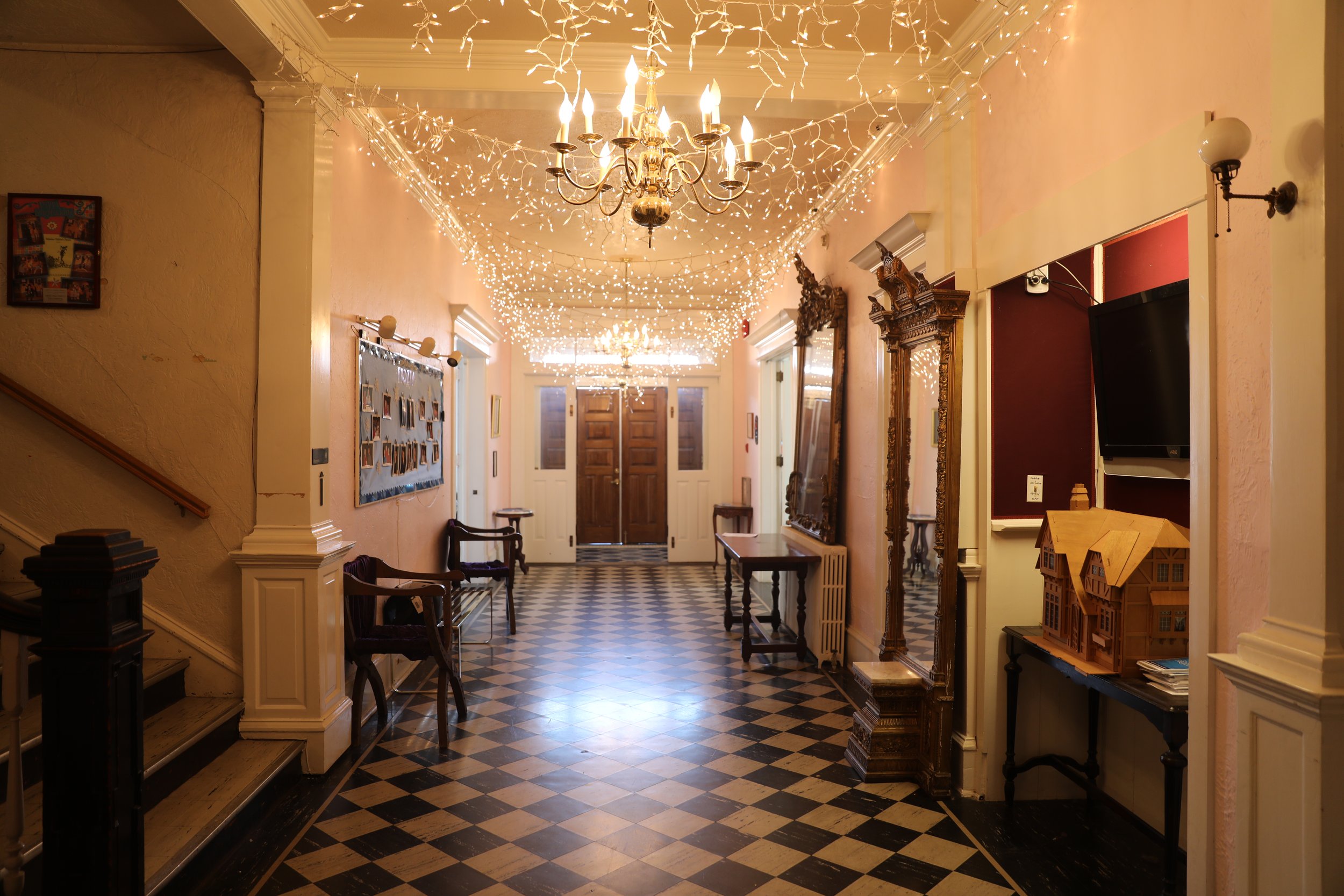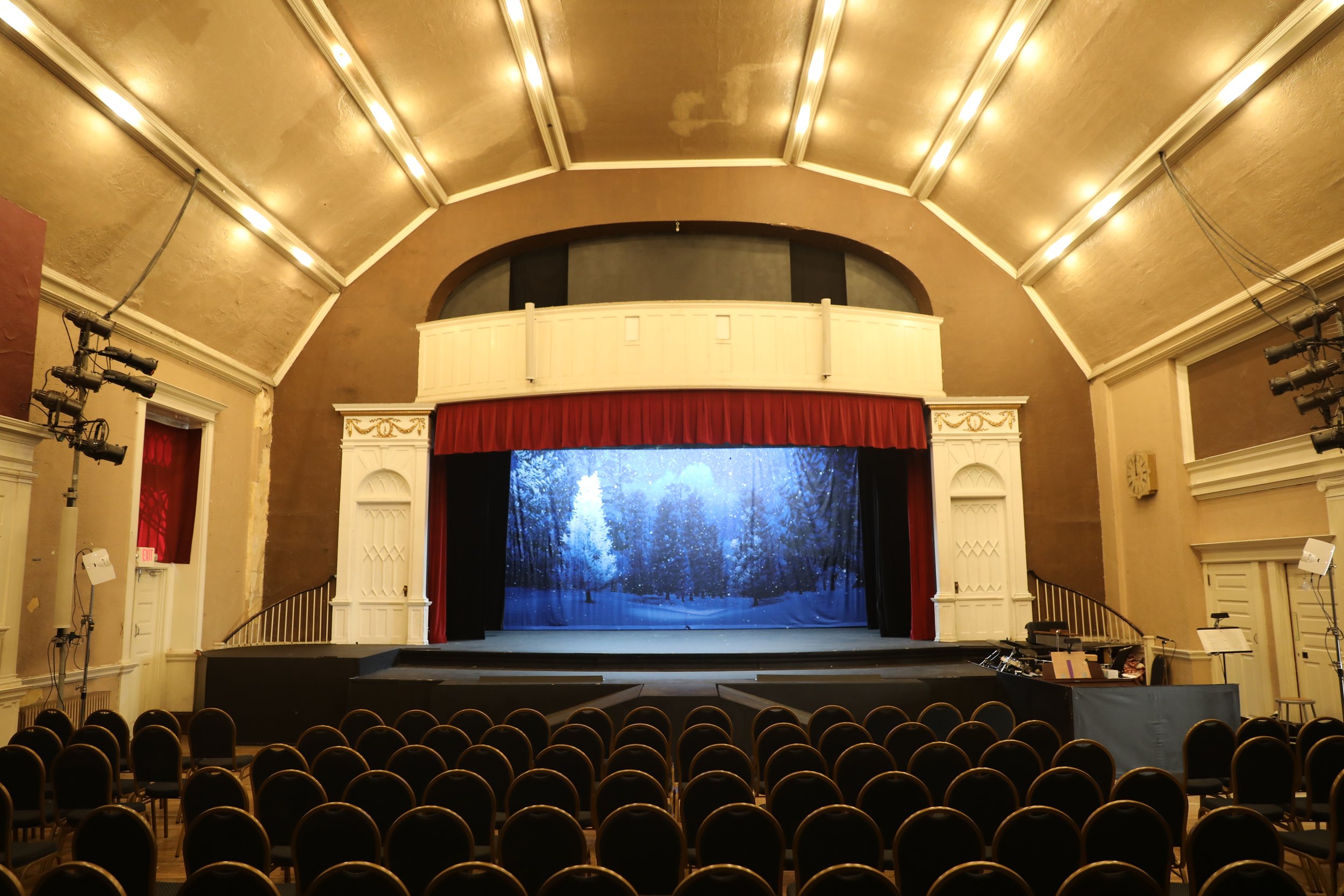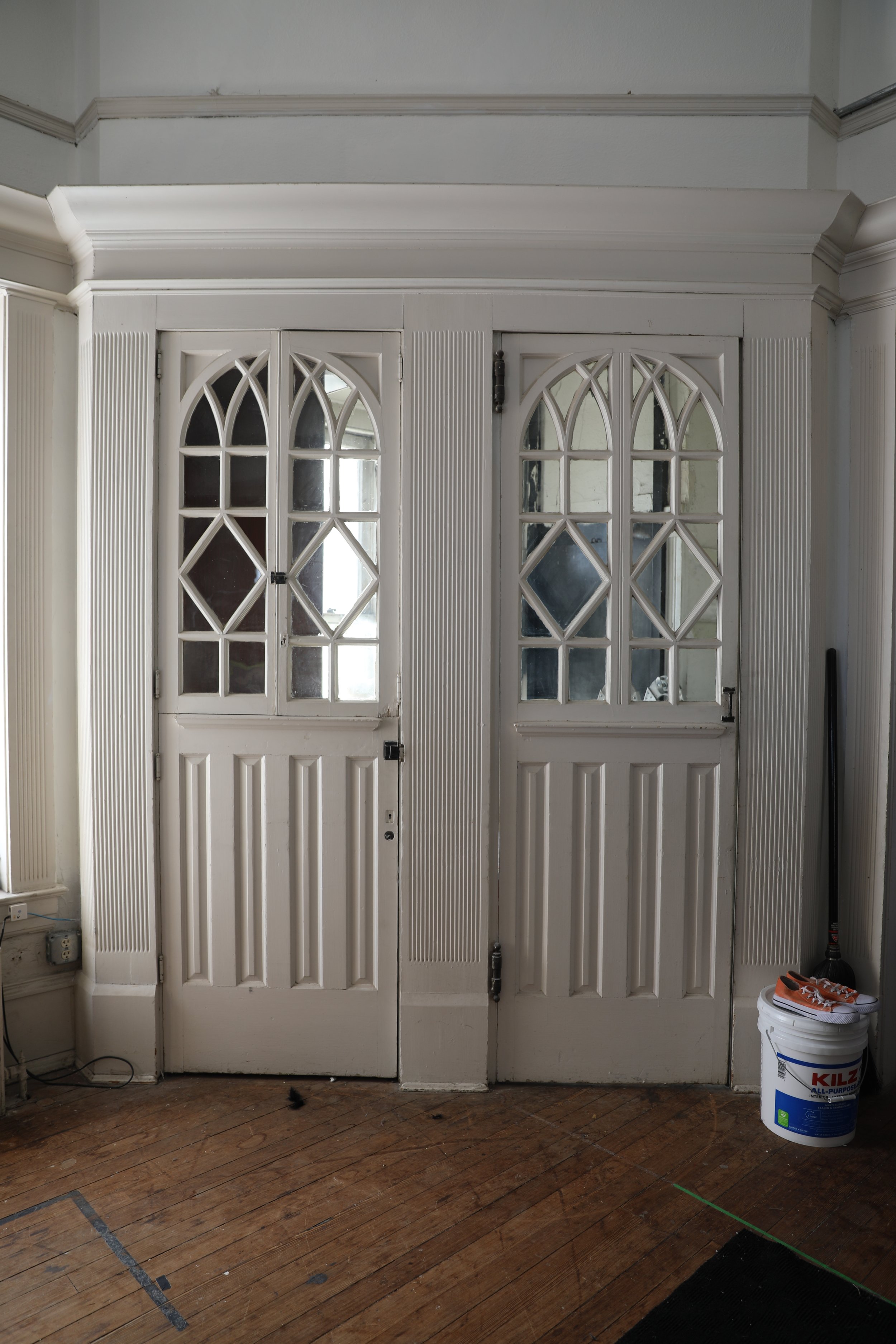New Century Club of Wilmington
1014 Delaware Avenue, Wilmington, DE
1892-93 | Women’s Club | Extant
“Parker…is preparing plans for the New Century Club Building, at Wilmington, Del., and at an early day they will be submitted for approval. They contemplate a handsome structure of stone, brick, and iron work, replete with ornamentation upon the exterior as well as interior, and will include all modern conveniences and comforts.” (April 20, 1892)
“Parker…has completed all detailed plans for the New Century Club house at Wilmington, Del., and will place them for estimates at once. These contemplate a structure three-stories high, of vitrified brick and stucco work, colonial style of architecture, also fitted for steam heat, electric bells and light, speaking tubes, dumb waiters, assembly room upon first floor, also offices and committee room. A fully equipped stage will be placed in assembly room, which is 25 x 43 feet. Second floor will contain a reception room and banquet hall, while the third will be fitted for dressing and toilet rooms, etc. The entire building will have all modern conveniences. The same architect is busy upon other suburban work and minor operations.” (May 11, 1892)
“Parker…is engaged in securing bids upon the New Century Club House, which will be erected in Wilmington, Del., the above being limited to builders and contractors of the above city. The plans have been fully described in this journal.” (June 1, 1892)
—
This project grew out of Minerva’s earlier commission for the New Century Club in Philadelphia, a sister chapter of the same organization. The New Century Club was established after the 1876 Centennial Exhibition, looking forward to a “new century” for women. The chapters, including the Wilmington branch, promoting self-governance, educational improvement, and social/civic causes among its members.
Much as the Philadelphia clubwomen had, the Wilmington clubwomen fundraised for their own headquarters building and hired Minerva for the job. She adopted a different design for this building, leaning on Colonial Revivalist principles rather than the Moorish Revival design of the Philadelphia clubhouse. Her design included an auditorium—where club members could convene lectures and performances, and organize fundraising events—and several rooms for meetings, social gatherings, and other club functions.
The building is now the Delaware Children’s Theatre, and remains in active use. The theater group makes full use of the clubhouse’s auditorium and its many rooms to store its costumes, theater backdrops, and props. The building was added to the National Register of Historic Places in 1983; see the nomination here.


